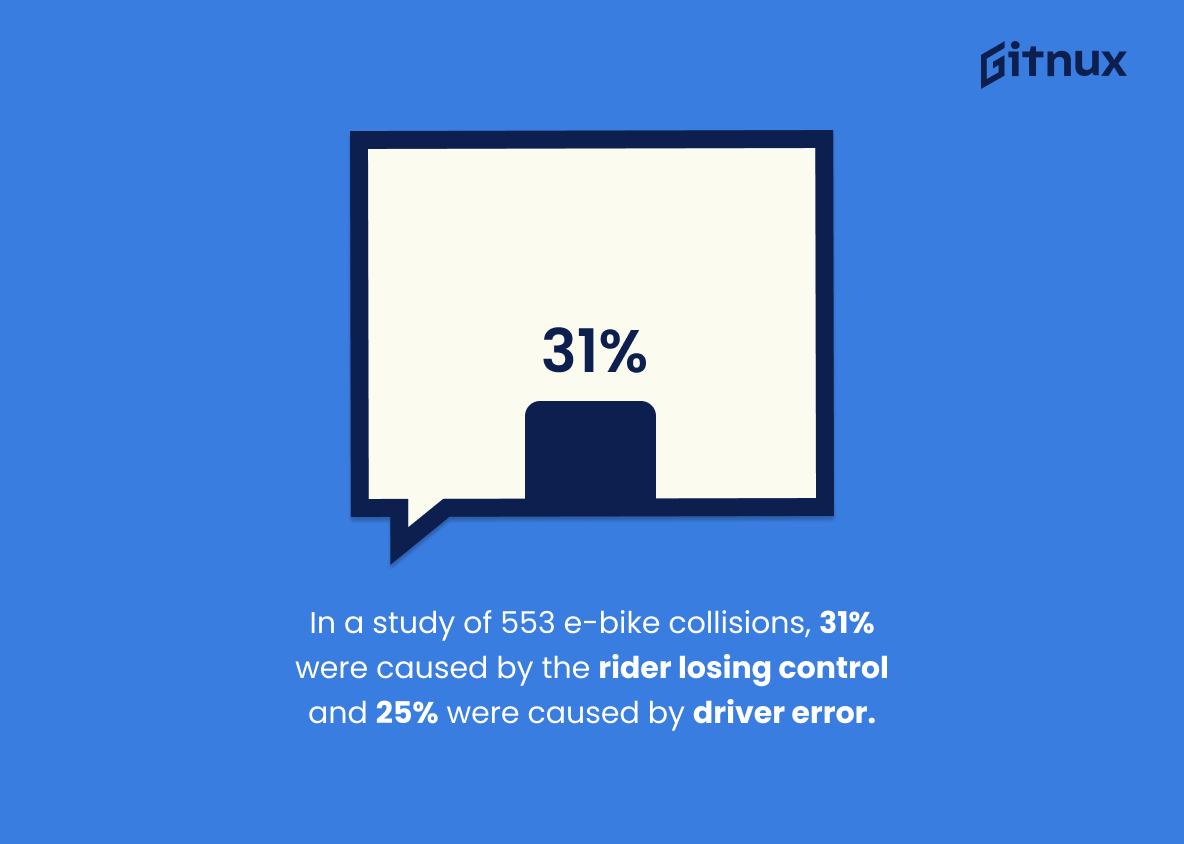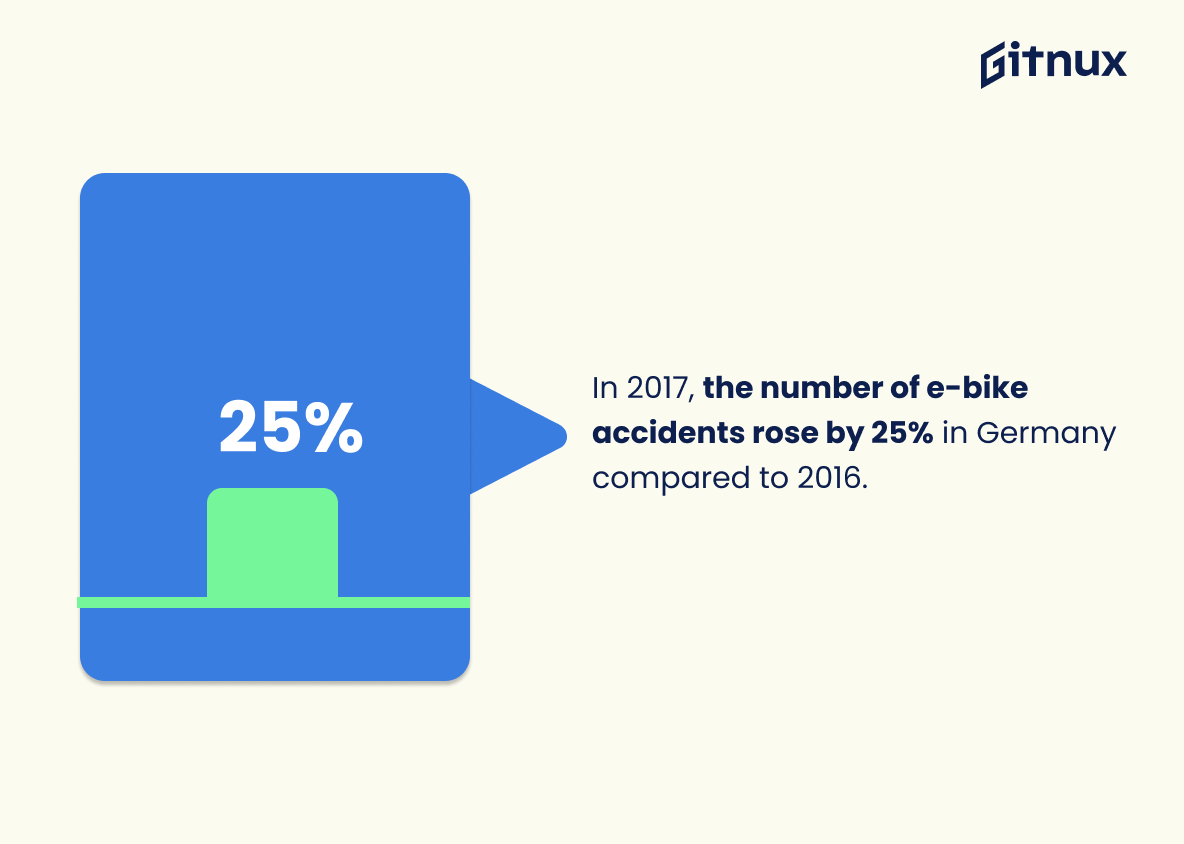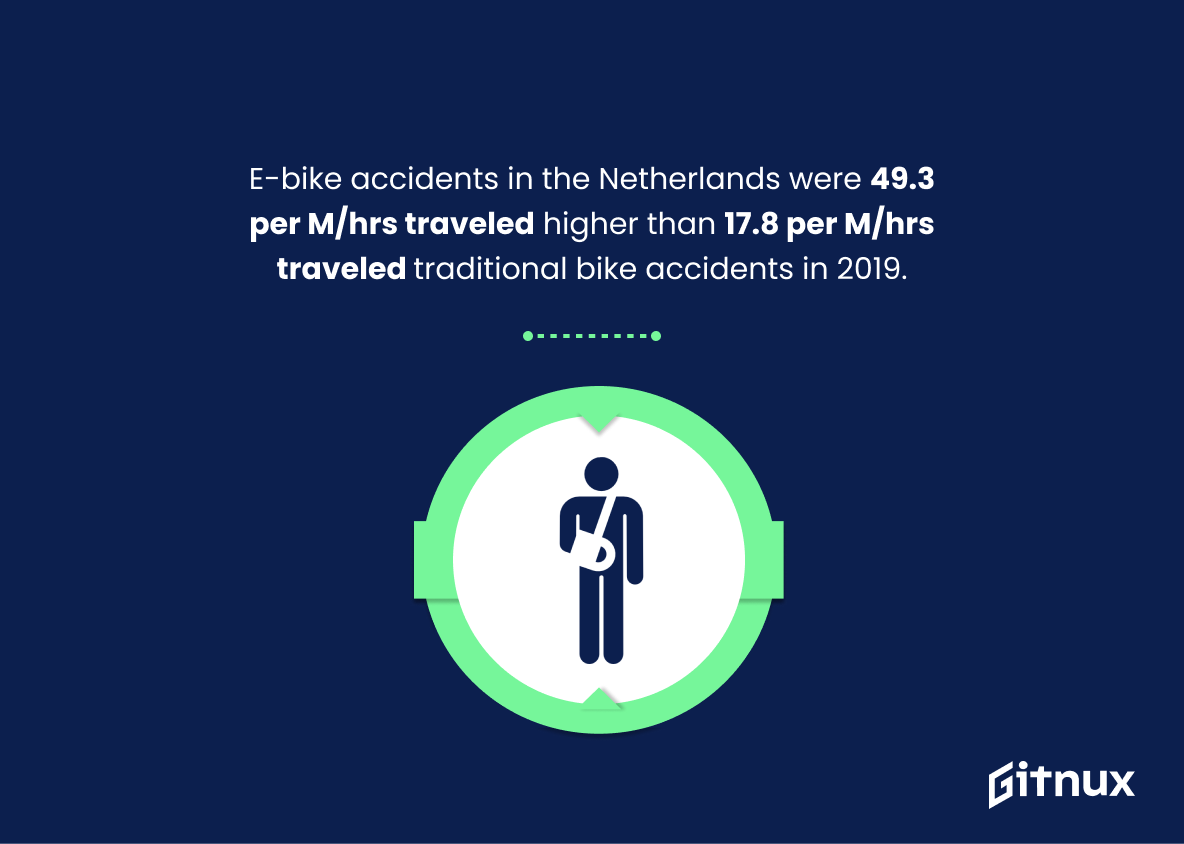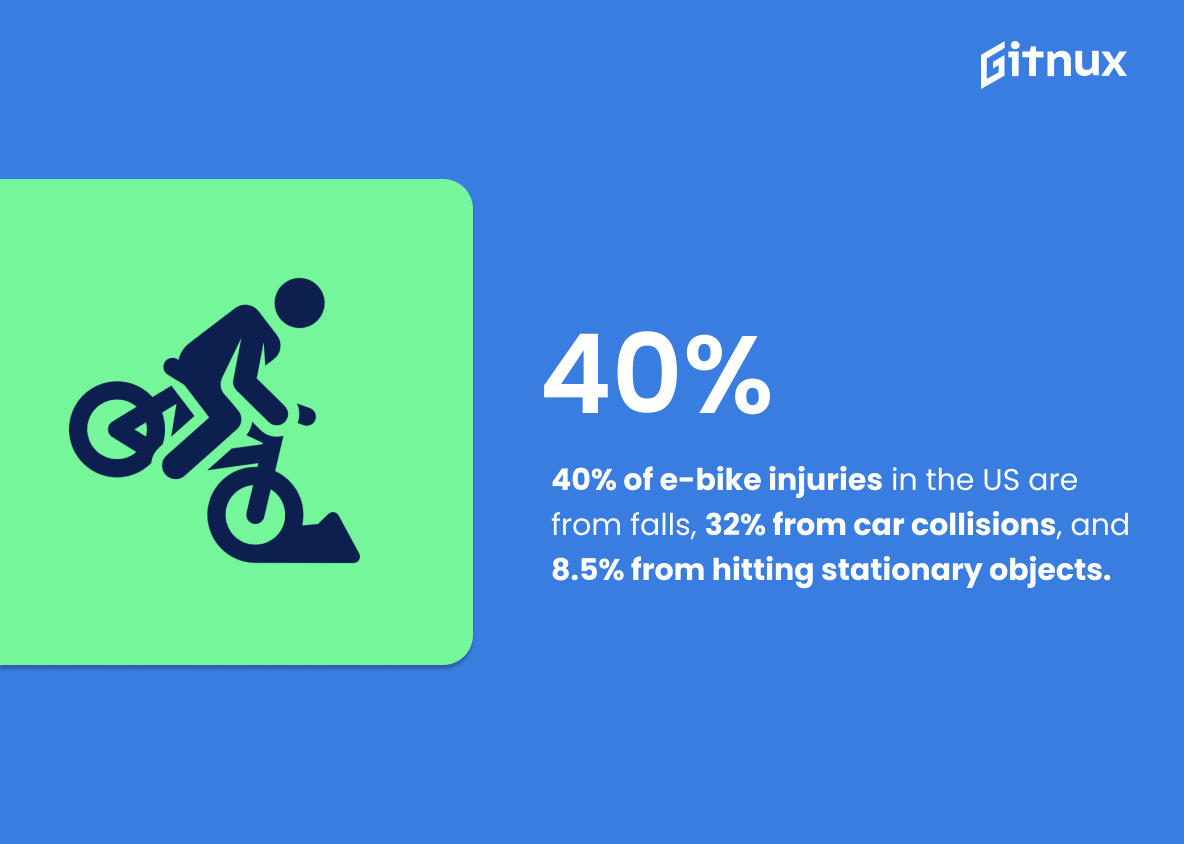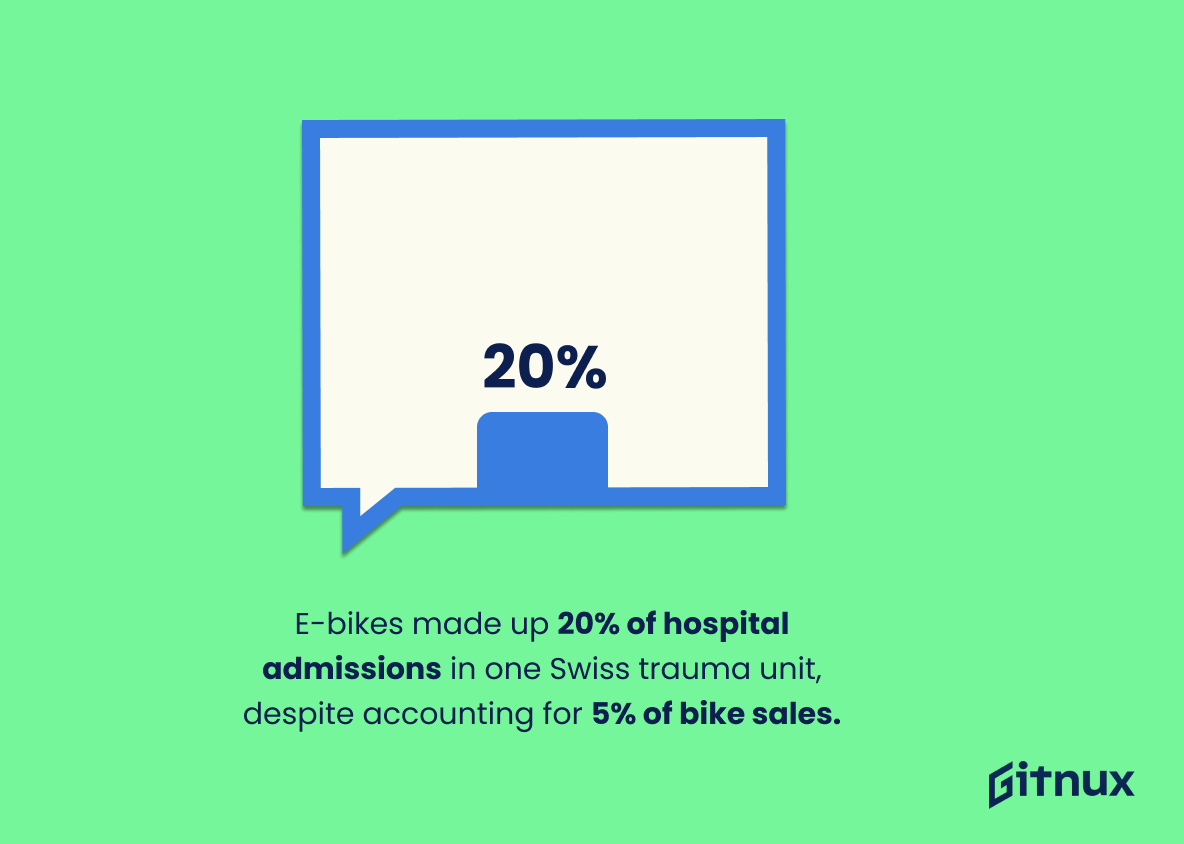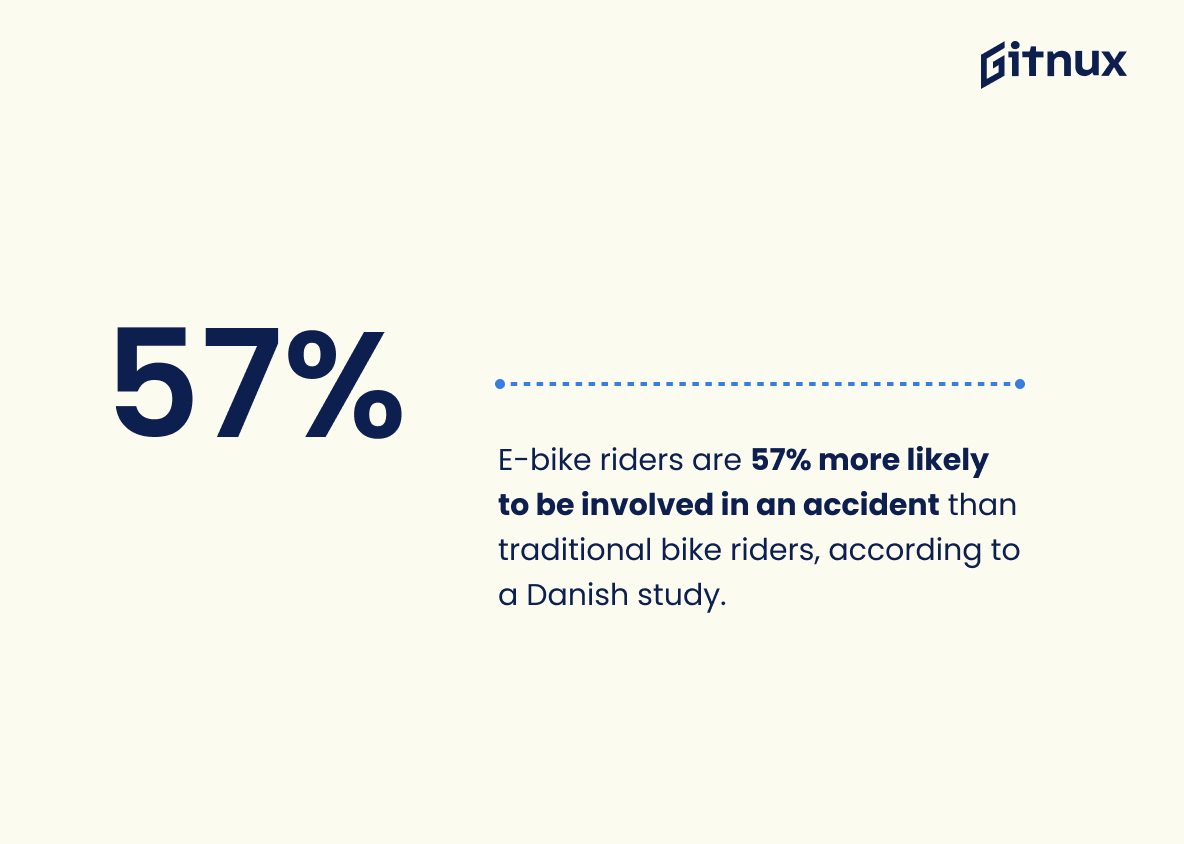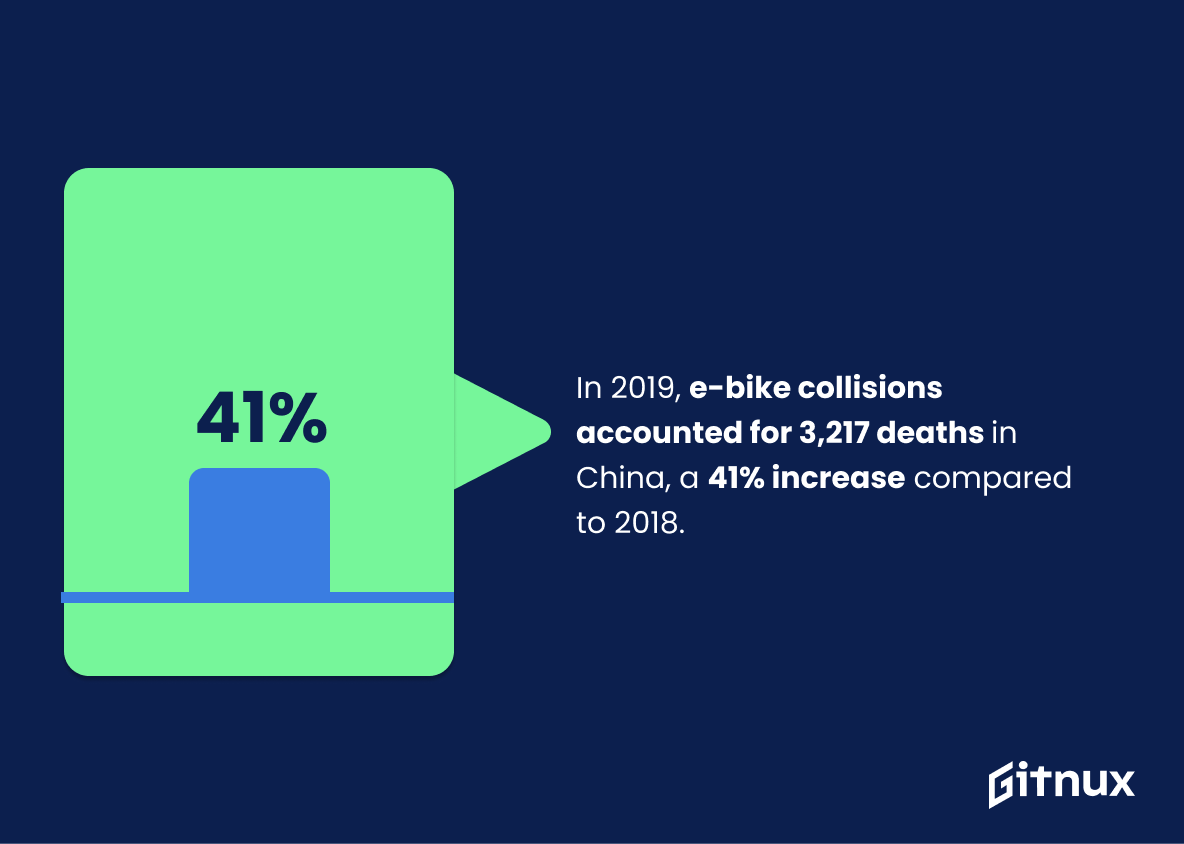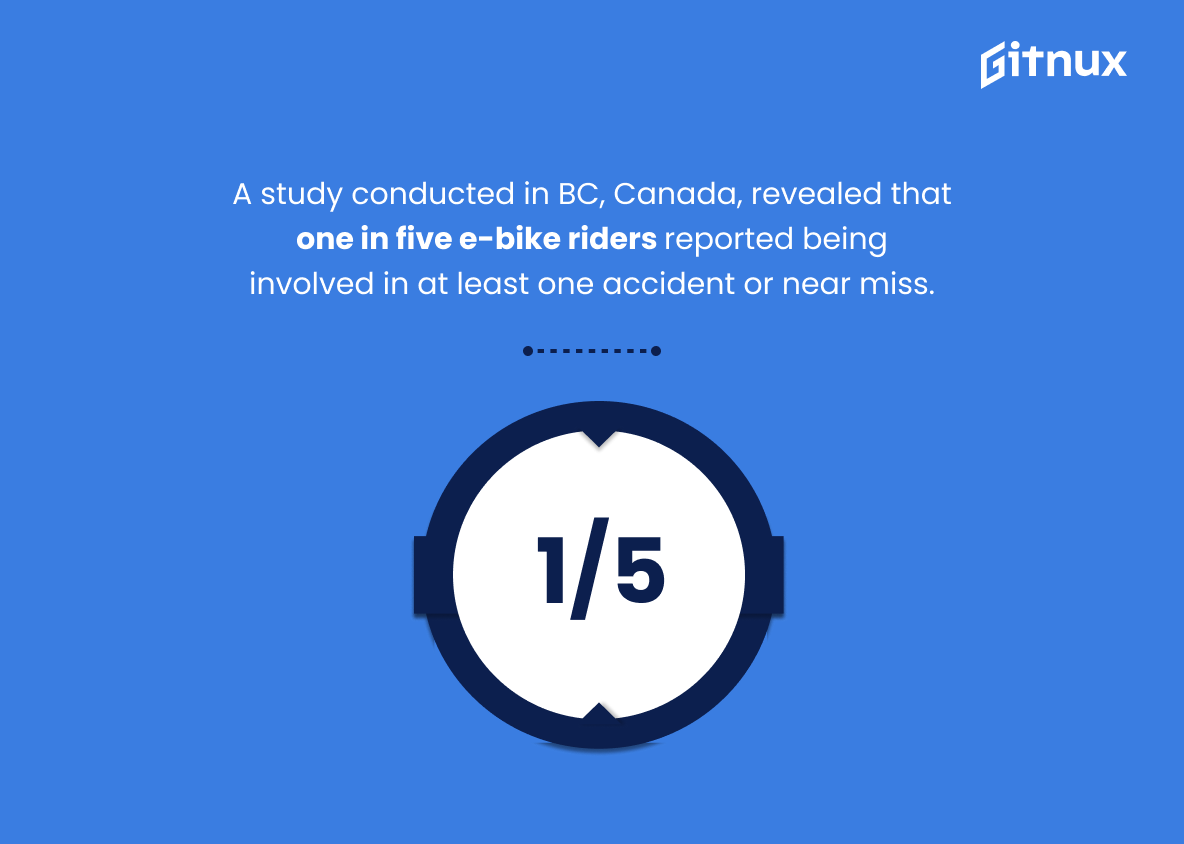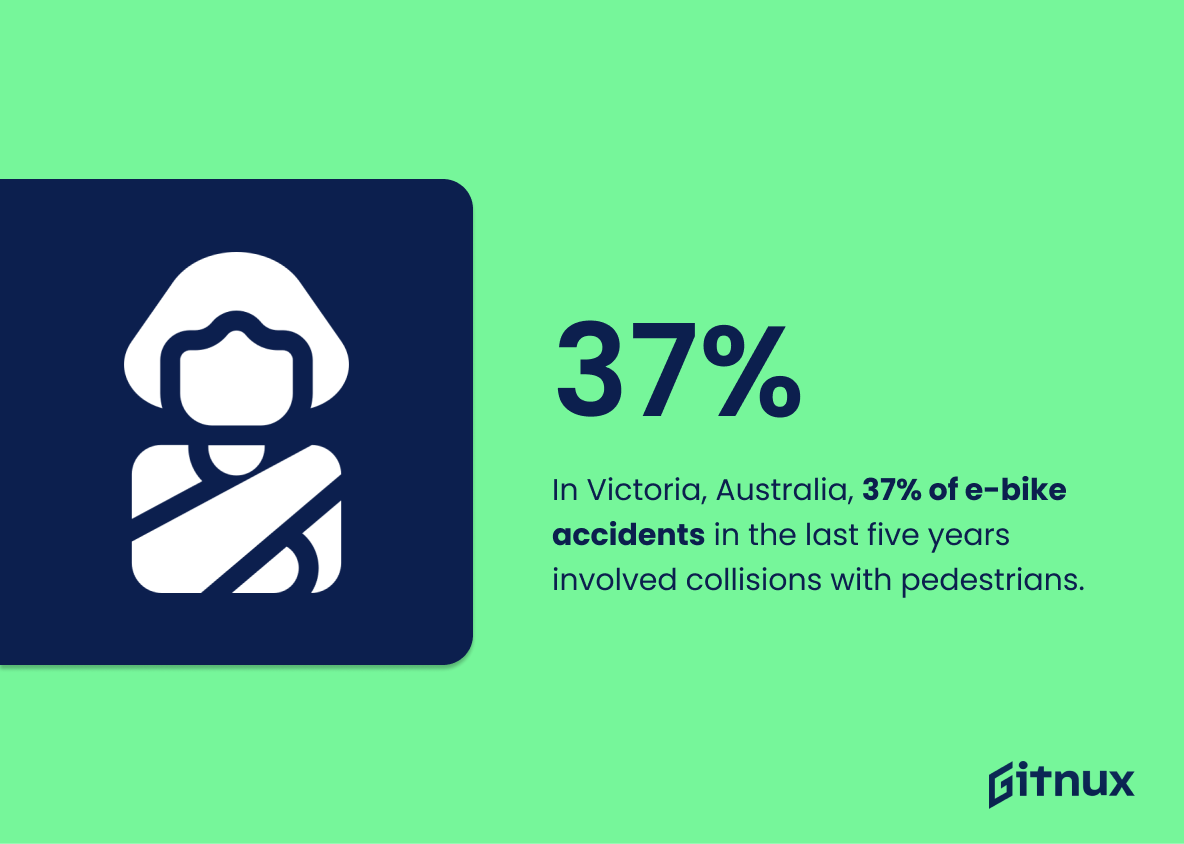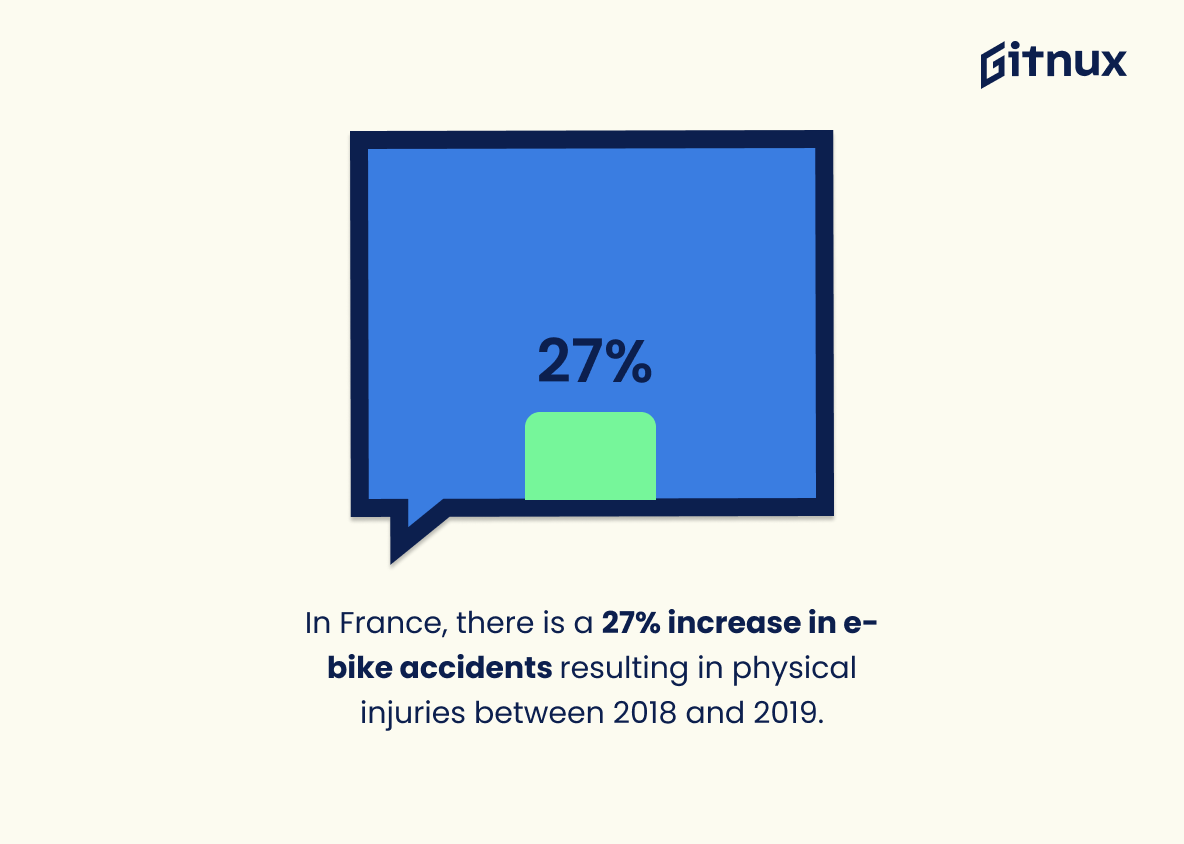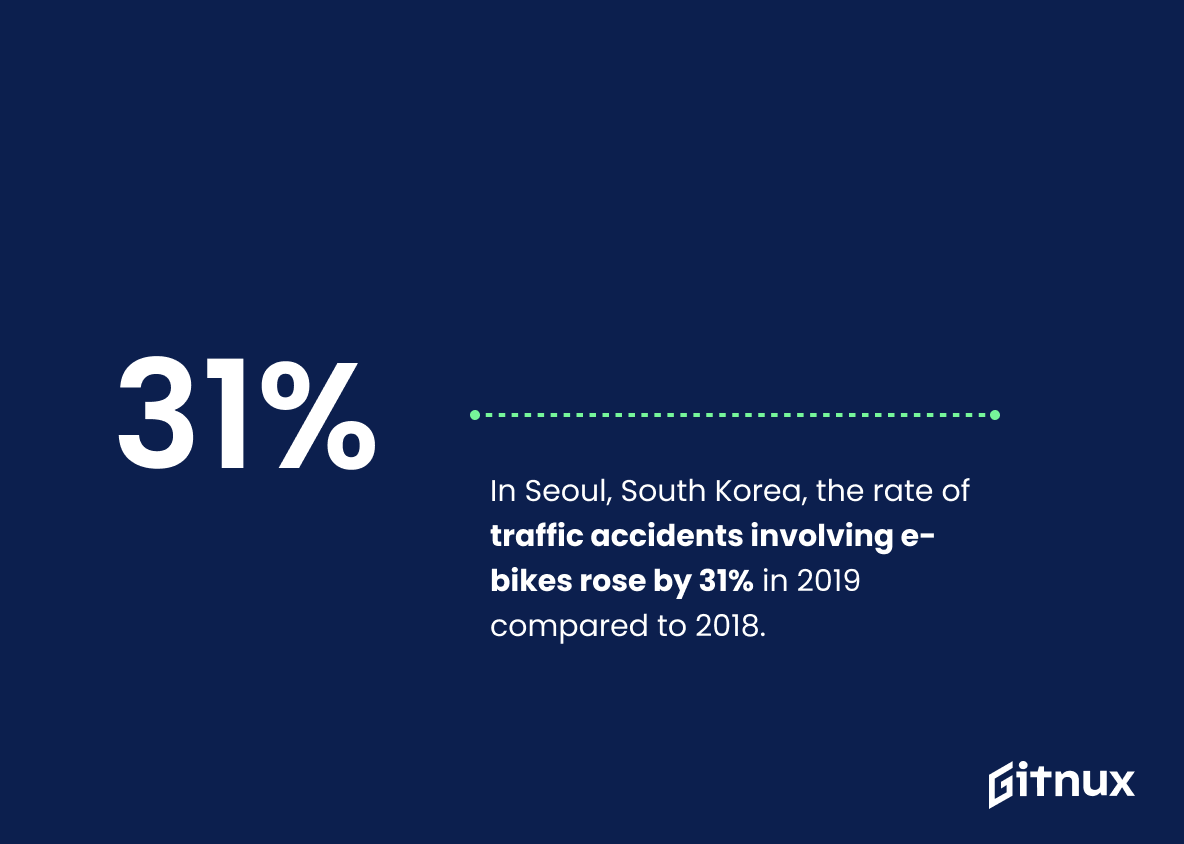As the popularity of e-bikes continues to grow, it is important to understand the risks associated with riding them. This blog post will explore recent statistics on e-bike accidents from around the world, including data from countries such as The Netherlands, Switzerland, Germany, United States and Canada. We’ll look at how age affects accident rates and what types of incidents are most common for riders in different locations. Finally we’ll discuss potential solutions that could help reduce these numbers in future years.
This statistic is a stark reminder of the potential dangers of e-bikes, as it shows a dramatic increase in the number of accidents in just one year. It serves as a warning to riders to be extra vigilant when using e-bikes, and to take all necessary safety precautions.
Approximately 90% of reported incidents with e-bikes or e-scooters in 2019 in NYC involved rider injury.
This statistic is a stark reminder of the potential danger of e-bikes and e-scooters. It highlights the need for riders to take extra precautions when using these vehicles, as the risk of injury is high. It also serves as a warning to those considering using e-bikes or e-scooters, as the likelihood of being injured is significant. This statistic is an important factor to consider when discussing e-bike accident statistics.
E Bike Accident Statistics Overview
In Switzerland, the risk of accidents is found to be 6.5 times higher for e-bikes than regular bicycles.
This statistic is a stark reminder of the potential danger of e-bikes compared to regular bicycles. It highlights the need for riders to take extra precautions when using e-bikes, as the risk of accidents is significantly higher. This is an important point to consider when discussing e-bike accident statistics.
In a study of 553 e-bike collisions, 31% were caused by the rider losing control and 25% were caused by driver error.
This statistic is a stark reminder of the dangers of e-bikes, with over half of all collisions being attributed to either rider error or driver error. It highlights the importance of taking extra care when riding an e-bike, as well as the need for drivers to be aware of the presence of e-bikes on the roads.
E-bike riders account for 25% of all bicycle accidents on New York City streets.
This statistic is a stark reminder of the potential danger of e-bikes on New York City streets. It highlights the need for riders to be aware of their surroundings and take extra precautions when riding an e-bike. It also serves as a warning to other cyclists and pedestrians to be aware of the increased presence of e-bikes on the roads.
In 2017, the number of e-bike accidents rose by 25% in Germany compared to 2016.
This statistic is a stark reminder that e-bike accidents are on the rise in Germany, and that more needs to be done to ensure the safety of e-bike riders. It is a call to action for all stakeholders to take the necessary steps to reduce the number of e-bike accidents and ensure that riders are safe.
In 2019, there were 49.3 e-bike accidents per million hours traveled compared to 17.8 accidents per million hours traveled for traditional bicycles in the Netherlands.
This statistic is a stark reminder of the potential danger of e-bikes compared to traditional bicycles. It highlights the fact that e-bikes are more prone to accidents, and that riders should take extra caution when using them. This is especially important for those who are new to e-bikes, as they may not be aware of the increased risk of accidents. The statistic serves as a warning to all e-bike riders to be aware of the risks and take the necessary safety precautions.
According to a US study, 40% of e-bike injuries were due to riders falling, 32% from collisions with cars, and 8.5% from riding into stationary objects.
This statistic is a crucial insight into the dangers of e-bikes, as it reveals that the majority of injuries are due to rider error rather than external factors. It highlights the importance of taking safety precautions when riding an e-bike, such as wearing a helmet and being aware of one’s surroundings. This information can be used to inform readers of the blog post about the risks associated with e-bikes and how to best protect themselves.
In 2018, e-bikes accounted for 20% of hospital admissions in one Swiss hospital’s trauma unit, although e-bikes represented only 5% of all bicycles sold.
This statistic is a stark reminder of the potential danger of e-bikes, as it shows that despite making up only a small portion of the total number of bicycles sold, they are disproportionately represented in hospital admissions. It is a clear indication that e-bikes pose a greater risk of injury than traditional bicycles, and should be taken into consideration when discussing e-bike accident statistics.
E-bike riders are 57% more likely to be involved in an accident than traditional bike riders, according to a Danish study.
This statistic is a crucial piece of evidence in the discussion of E-bike accidents, as it provides a clear indication of the increased risk associated with riding an E-bike. It is an important factor to consider when evaluating the safety of E-bikes, and can help inform decisions about whether or not to ride one.
In 2019, e-bike collisions accounted for 3,217 deaths in China, a 41% increase compared to 2018.
This statistic is a stark reminder of the dangers of e-bike accidents in China, showing a significant increase in fatalities from the previous year. It serves as a warning to riders to be extra cautious when using e-bikes, and to take all necessary safety precautions. It also highlights the need for further research into the causes of e-bike accidents and the implementation of measures to reduce the number of fatalities.
A study conducted in BC, Canada, revealed that one in five e-bike riders reported being involved in at least one accident or near miss.
This statistic is a stark reminder of the potential risks associated with e-bike riding. It highlights the importance of taking safety precautions when riding an e-bike, as one in five riders have experienced an accident or near miss. This statistic is a valuable addition to any blog post about e-bike accident statistics, as it provides a tangible example of the dangers of e-bike riding.
In Victoria, Australia, 37% of e-bike accidents in the last five years involved collisions with pedestrians.
This statistic serves as a stark reminder of the potential danger posed by e-bikes to pedestrians in Victoria, Australia. It highlights the need for increased safety measures to be taken to protect pedestrians from the risk of e-bike collisions. It also serves as a warning to e-bike riders to be extra vigilant when riding near pedestrians, as the consequences of a collision can be severe.
In France, there is a 27% increase in e-bike accidents resulting in physical injuries between 2018 and 2019.
This statistic is a stark reminder of the potential dangers of e-bikes, as it shows that the number of physical injuries resulting from e-bike accidents has risen significantly in just one year. It is a warning to all e-bike riders to be extra vigilant and take all necessary safety precautions when riding.
In Seoul, South Korea, the rate of traffic accidents involving e-bikes rose by 31% in 2019 compared to 2018.
This statistic is a stark reminder of the dangers of e-bikes in Seoul, South Korea. The 31% increase in traffic accidents involving e-bikes in 2019 compared to 2018 is a cause for concern and should be taken seriously. It is a sign that more needs to be done to ensure the safety of e-bike riders in the city.
Conclusion
The statistics presented in this blog post demonstrate that e-bike accidents are a growing concern around the world. In many countries, including the Netherlands, Switzerland, Germany, and South Korea, there has been an increase in both the number of e-bike accidents and their severity over recent years. Additionally, studies have shown that older riders are more likely to be involved in fatal or severe accidents than younger riders. These findings suggest that further research is needed into ways to reduce the risk of injury for all types of cyclists on our roads.
References
0. – https://www.monash.edu
1. – https://www.koreaherald.com
2. – https://www..nyc.gov
3. – https://www.nytimes.com
4. – https://www.sciencenordic.com
5. – https://www.swissinfo.ch
6. – https://www.swov.nl
7. – https://www.reuters.com
8. – https://www.connexionfrance.com
9. – https://www.digitalcollection.zhaw.ch
10. – https://www.cdc.gov
11. – https://www.researchgate.net
12. – https://www.bcbusiness.ca
13. – https://www.swissre.com
14. – https://www.dw.com

